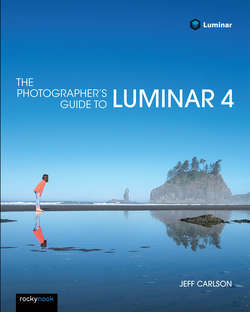Читать книгу The Photographer's Guide to Luminar 4 - Jeff Carlson - Страница 18
На сайте Литреса книга снята с продажи.
The Canvas Panel
ОглавлениеOne of the ways Luminar differs from other photo-editing applications is the absence of a long toolbar taking up a portion of the screen. The tools that affect the shape of the image and that fix specific areas are stored in the Canvas panel (Figure 1-10). (I cover the Canvas tools in more detail in Chapter 6.)
FIGURE 1-10: Instead of a lengthy tools palette, as found in other applications, Luminar concentrates its tools into a single panel.
Click the Canvas button in the sidebar to access its tools:
•Crop & Rotate: Use the Crop & Rotate tool to change the image’s composition, specify other aspect ratios, and straighten the shot. On the Mac, you can also flip the image horizontally or vertically or rotate it in 90-degree increments. Crop also applies to the entire image and all its layers. Press the C key to quickly activate the Crop tool.
•Erase: The Erase tool removes areas of the image and replaces them using algorithms that calculate the result. It’s great for erasing objects like stray power lines. In situations like that, the software can handle the task so you don’t have to do it manually with the Clone & Stamp tool. Press Command/Ctrl-E to switch to the Erase tool.
•Clone & Stamp: A common method of making touch-ups is to use the Clone & Stamp tool. Let’s say you need to remove some dust marks or fill in a patch of grass that stands out; you can define a nearby area as a source and then stamp (copy) the pixels to fix the spot. Press Command/Ctrl-J to switch to the Clone & Stamp tool.
•Lens & Geometry: This collection of tools can fix distortion, chromatic aberration, fringe issues, and vignetting caused by some lenses, as well as changing the overall shape of the image.
